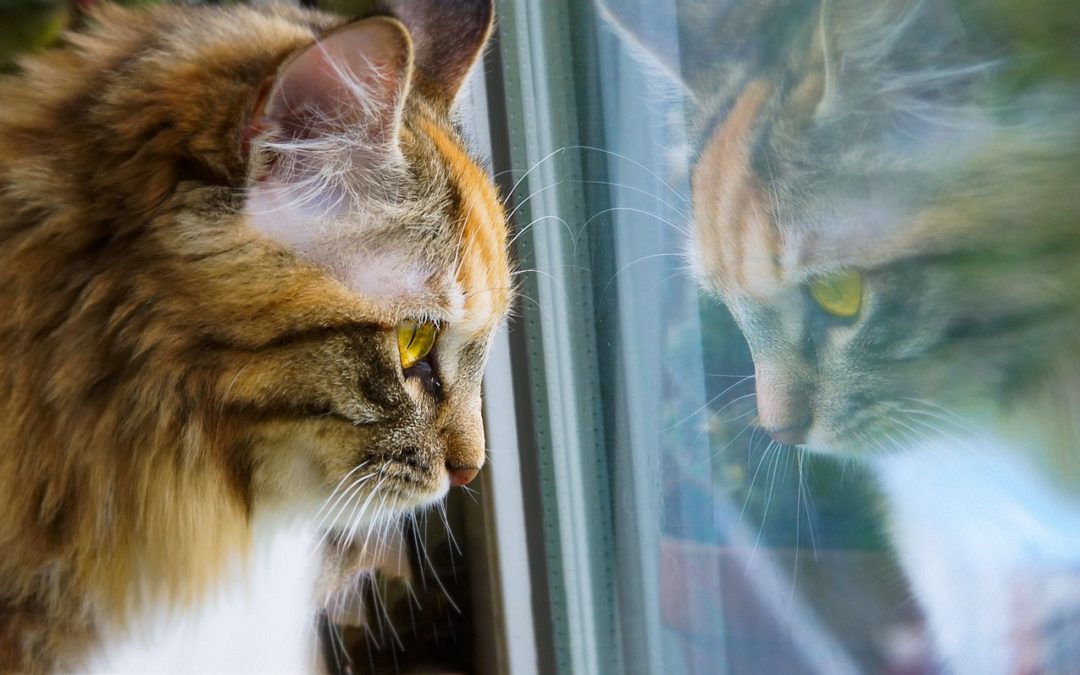Blood in a cat’s urine is always a cause for concern. If you find drops of blood or discolored urine in the litterbox or on the floor around it, you should bring your cat to the vet as soon as possible. At Anasazi Animal Clinic, we know that when a cat is peeing blood, they are suffering great pain and need treatment as soon as possible.
Why Is My Cat Peeing Blood?
The most common cause of blood in a cat’s urine is feline lower urinary tract disease (FLUTD). FLUTD is an umbrella medical term for a few different conditions where blood in the urine is a symptom. FLUTD occurs mainly in middle-aged cats around 7 years of age, and is most prevalent in indoor cats who eat a dry food diet and live sedentary lives.
The main symptoms of FLUTD include:
- Blood in the urine
- Straining and/or frequently trying to urinate
- Urinating only a very small amount
- Meowing or crying while urinating
- Urinating outside of the litterbox
- Exceedingly cleaning/licking the genital area
Complications of Feline Lower Urinary Tract Disease
Urinary Tract Infections (UTIs)
A bacterial infection of the bladder or urethra is known as a urinary tract infection or UTI. This type of infection can occur in both female and male cats, but it’s more common in males. Antibiotics can treat UTIs in most cats, but some may need a special diet to ensure they are getting enough fluids to prevent further infections.
Urinary Stones or Crystals
Cats can develop mineral crystals or stones in their urinary systems, which adversely affect their bladders, urethras, and kidneys. Not only are urinary stones irritating and painful, but they can also cause life-threatening blockages as well. Urinary stones will sometimes dissolve or pass with the proper dietary changes and medications, but cases involving large stones may need surgical intervention.
Obstructions of the Urethra
If you find your cat peeing blood, there is a good chance that they might have a urethral obstruction. Urethral obstructions can be caused by urinary stones or urethral plugs—a softer mass of cells, proteins, and sometimes crystals that join together and block the flow of urine so that it cannot pass out of the cat’s body. Male cats have a higher risk for urethral obstructions because they have an extended, slim urethra compared to female cats.
Feline Idiopathic Cystitis
The most common cause of FLUTD in cats—and probably the most frustrating diagnosis for cat owners—is feline idiopathic cystitis (FIC). Stress from introducing a new animal into your household, moving homes, a dirty litterbox, and other environmental changes could cause FIC.
Because the cause of FIC is related to stress, there’s no clear-cut medical treatment available. Possible treatments include medication, dietary changes, environmental changes, and the use of stress-reducing pheromone sprays. For cats with FIC, we treat the underlying stressors to try to prevent the symptoms—such as peeing blood—from occurring again.
My Cat Is Peeing Blood—What Should I Do?
If your cat is peeing blood, it is important to contact your veterinarian right away. Kidney infections and urethra blockages can be fatal to cats. Your vet will collect urine and blood samples to screen for certain diseases, and perform a thorough exam to find out what is causing blood in your cat’s urine. If you notice blood or discoloration in your cat’s urine, contact us to make an appointment.
Image by Andrey_and_Lesya from Pixabay

